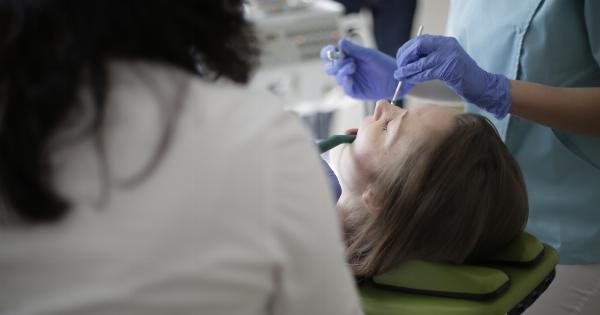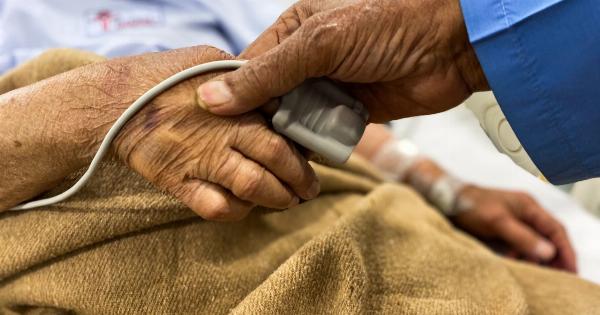In the world of healthcare, prompt response and quick decision-making play a vital role in ensuring patient safety. However, there are instances when urgent intervention is not only desirable but entirely imperative.
One such case revolves around a patient named Daphne, whose critical condition poses a significant risk to both herself and those around her. This article emphasizes the need for fast action to address her situation and prevent any potential harm.
Daphne’s Background and Medical History
Daphne, a 37-year-old female, has a complex medical history that includes chronic health issues, such as cardiovascular disease and diabetes. She has been under the care of multiple healthcare providers for several years.
However, recent developments in her health have raised concerns about patient safety and the need for immediate medical attention.
Current State of Affairs
As of her last medical assessment, Daphne’s condition has rapidly deteriorated. She is experiencing uncontrolled blood sugar levels, extreme fatigue, and respiratory distress.
These symptoms indicate a potentially life-threatening situation that demands swift action from healthcare professionals.
Risk Factors and Potential Consequences
The immediate risk factors associated with Daphne’s condition are numerous. Firstly, her cardiovascular disease increases the likelihood of a cardiac event, such as a heart attack or stroke.
Secondly, her uncontrolled diabetes significantly raises the risk of severe complications, including diabetic ketoacidosis, kidney failure, and even coma. Lastly, her compromised respiratory system makes her susceptible to respiratory failure or acute respiratory distress syndrome (ARDS).
If left unaddressed, these risks can lead to irreversible damage to Daphne’s organs and potentially result in her untimely demise.
Furthermore, failing to take swift action to stabilize her condition may also put other individuals in proximity at risk, especially if Daphne were to experience a medical crisis in a public place or healthcare facility.
The Urgent Need for Medical Intervention
Given the severity of Daphne’s current state, it is crucial for healthcare providers to take immediate action. Timely intervention can help mitigate the risks associated with her condition and improve her chances of a positive outcome.
The following actions need to be taken without delay:.
1. Assessing Daphne’s Vital Signs
The first step is to evaluate Daphne’s vital signs thoroughly. This includes measuring her pulse rate, blood pressure, oxygen saturation levels, respiratory rate, and body temperature.
These indicators can provide valuable insights into her overall health status and aid in making informed treatment decisions.
2. Stabilizing Blood Sugar Levels
Controlling Daphne’s blood glucose levels is of utmost importance. Immediate measures should be taken to administer the appropriate medications and adjust her insulin dosage as required.
This will help prevent complications associated with uncontrolled diabetes and increase her chances of a favourable response to treatment.
3. Monitoring Cardiac Function
Given Daphne’s history of cardiovascular disease, continuous monitoring of her cardiac function is necessary. ECG assessments, echocardiograms, and regular checks of cardiac enzymes can offer valuable insights into her heart’s health.
Any significant changes or indications of imminent cardiac events should be addressed without delay.
4. Assessing Respiratory Distress
Respiratory distress is a significant concern in Daphne’s case. Continuous monitoring of her oxygen saturation levels, pulmonary function, and respiratory rate is crucial.
If her condition worsens or she shows signs of respiratory failure, immediate interventions such as supplemental oxygen, nebulizer treatments, or even assisted ventilation may be necessary.
5. Addressing Potential Infections
Patients with compromised health, like Daphne, are at a higher risk of contracting and developing infections.
Quick assessment and early administration of appropriate antibiotics may be necessary to prevent infection-related complications, such as sepsis or pneumonia.
6. Consulting Specialists
Due to the complexity of Daphne’s case, involving specialists from relevant fields is crucial.
Consulting with endocrinologists, cardiologists, pulmonologists, and other specialists can provide valuable perspectives and additional expertise needed to manage her critical condition effectively.
7. Emergency Response Preparation
Fast action is not limited to healthcare professionals alone. Public spaces and healthcare facilities must also be ready to respond swiftly in case of a medical emergency involving Daphne.
Ensuring that emergency protocols are in place, staff is trained in basic life support measures, and essential life-saving equipment is readily available can significantly enhance the chances of a positive outcome in critical situations.
8. Coordinated Care Plan
In order to address Daphne’s complex health issues comprehensively, a coordinated care plan involving all her healthcare providers is essential.
Regular communication, sharing of medical records, and collaborative decision-making can help streamline her treatment and prevent any potential gaps or misunderstandings.
9. Continuous Monitoring and Reevaluation
Even after the initial intervention, continuous monitoring and reevaluation of Daphne’s condition are necessary.
This includes regular follow-up appointments, laboratory tests, and imaging studies to assess her response to treatment and identify any new developments or complications.
10. Supportive Care and Patient Education
Lastly, providing Daphne with appropriate supportive care and patient education is vital. She must understand her condition, medications, lifestyle modifications, and potential warning signs.
Empowering her to actively participate in her own care can greatly contribute to better outcomes and help mitigate potential risks.
In Conclusion
The case of Daphne underscores the critical nature of the fast action required when faced with a patient whose condition poses significant risks.
Timely and coordinated interventions by healthcare professionals, coupled with readiness of healthcare facilities and the public, are essential in safeguarding patient safety and maximizing the chances of a favorable outcome. By prioritizing patient care and responding swiftly to medical urgencies, we can ultimately make a significant impact on the overall well-being of individuals like Daphne.






























